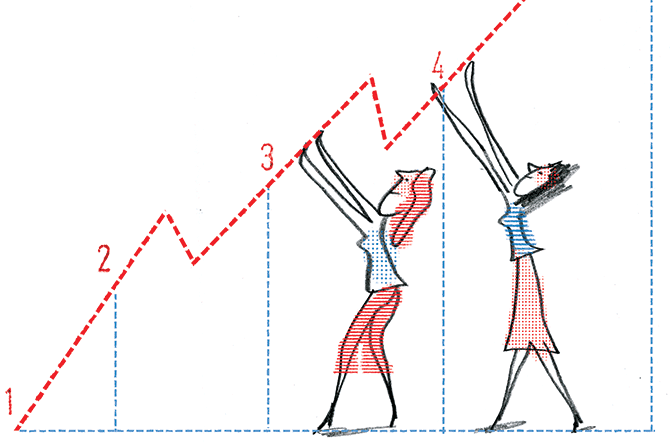
A lot has been written about the “sandwich generation,” working adults under pressure to raise kids and care for aging parents — and probably forgoing their own financial needs to pull it off.
To which women of just about any generation might say: Welcome to my world!
Kara Stiles at Forbes wrote an excellent piece that details the problems women face in saving for retirement. These include the wage gap, losing earning years to caregiving for children, working part-time (so no benefits), and just plain living longer than men.
That’s why women are 80% more likely than men to be poor at retirement age, according to the National Institute on Retirement Security.
My Rebalance colleague Sally Brandon has written incisively on women and retirement.
She points out that women have far less in their retirement accounts than men — on average $59,300 vs. $100,000. And while nearly the same number of men and women participate in 401(k) plans, women save 6.9% of their pay, while men sock away 7.6%.
Why? Women earn less, frankly. That savings gap, coupled with career “time outs” and part-time work, add up to less money for a longer life.
Our system of funding retirement through worker contributions — which can be effective — eventually lets women down. Usually, it’s because they don’t fit the employee mold those benefits were designed to serve.
Defined contribution retirement plans — your 401(k), 403(b) or IRA — were created to replace the pension system once sponsored by big corporations. Yet the system offered by most employers was built in an era when men were the primary breadwinners.
Millions of women today put in long hours in retail, business, healthcare, and other occupations. They lead organizations and still take on the pressures of family and community. Yet ultimately they get shortchanged.
Doing more
The Institute has a number of recommendations for leveling the playing field, including strengthening Social Security, expanding tax credits for savers, automatically enrolling women in IRAs, and opening retirement plans to part-time workers.
On the corporate side, Starbucks, the ubiquitous coffee chain, is leading the charge on extending benefits to part-time employees, including retirement and healthcare. And we’re beginning to see state-level legislation to extend 401(k) plans to all small-business employees.
That’s all good. But we need to do more.
According to Social Security Administration projections, a man who reaches age 65 is likely to live until age 84.3. A woman aged 65 will see 86.6.
That gap seems small, but remember: A quarter of those 65-year-olds will live past age 90 and one in 10 will live to past age 95. Want to wager how many of them will be women? After 95, that’s about four women to each man, according to Census data.
This isn’t just a problem for the government or for those of us in the financial services industry. Anyone with a mother, wife, daughter, or female colleague who deserves to one day retire securely should care.
The retirement gender gap won’t go away unless we address it properly as a society, and soon.





